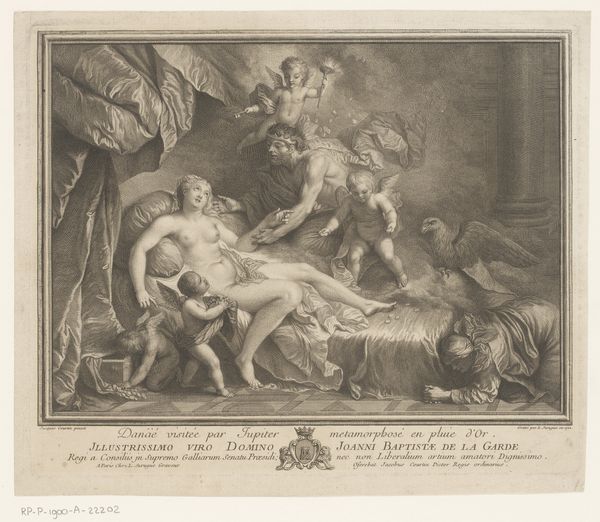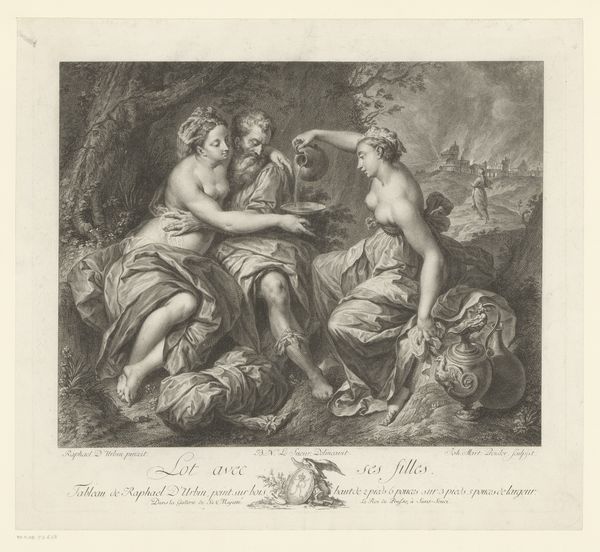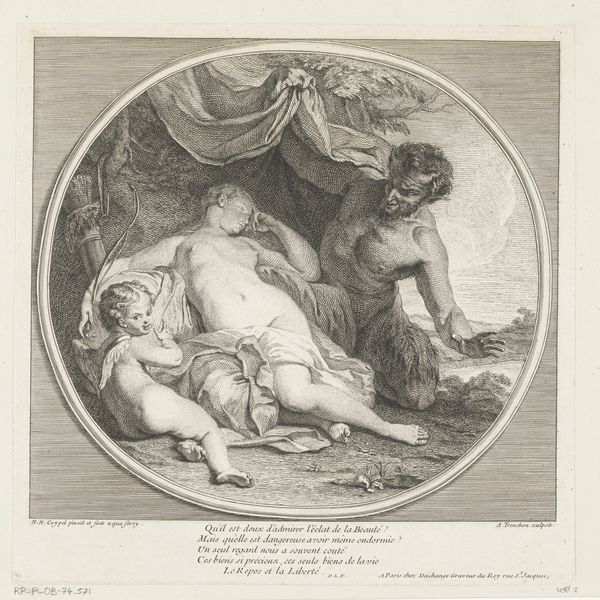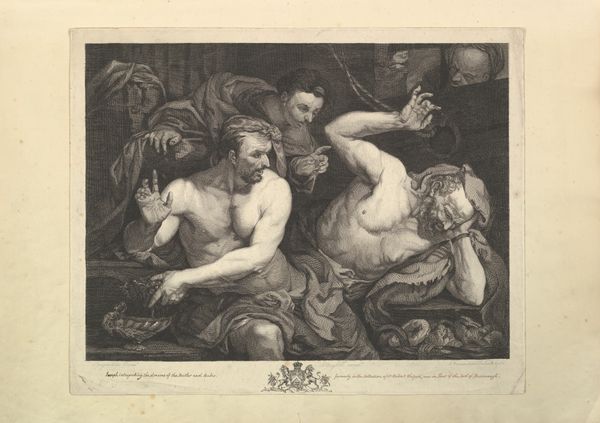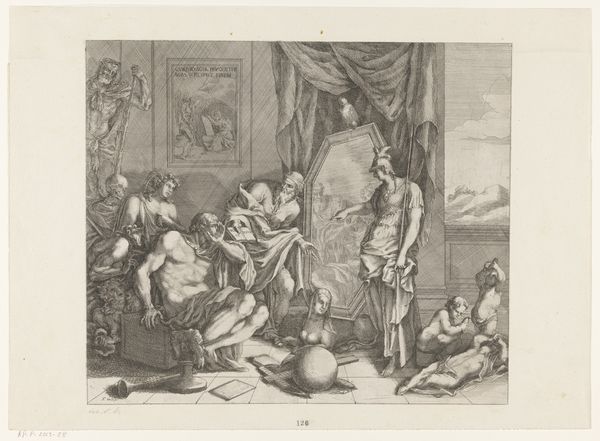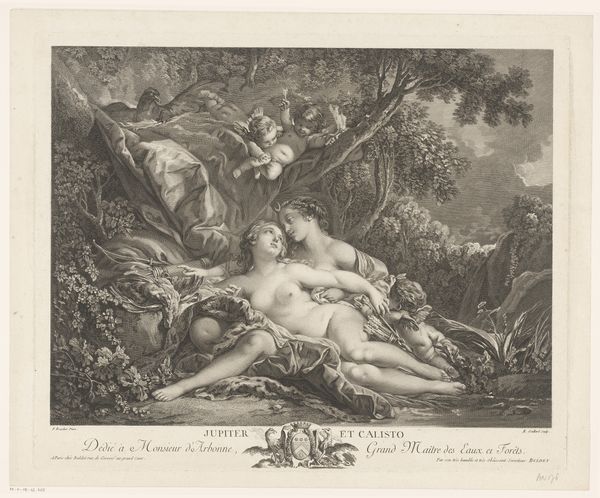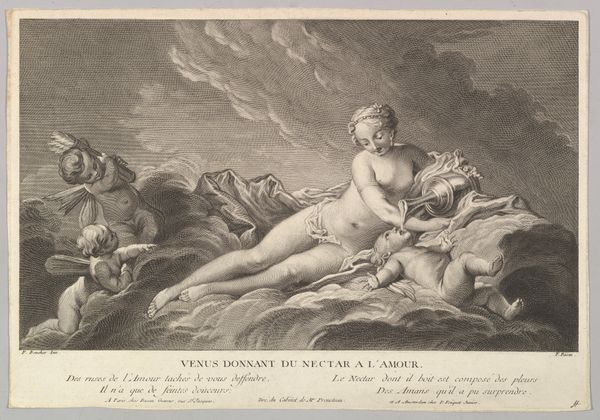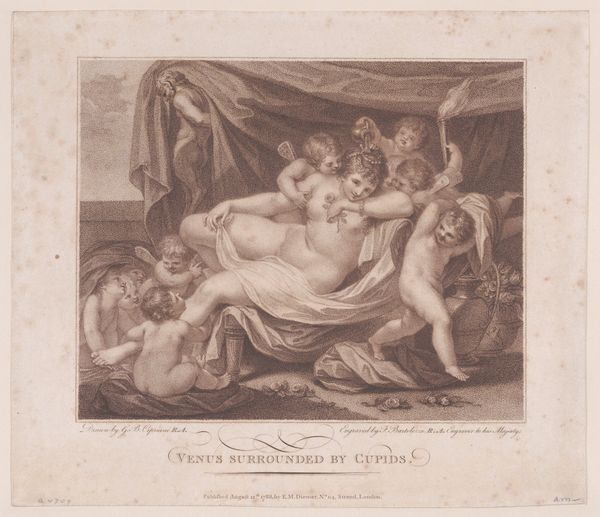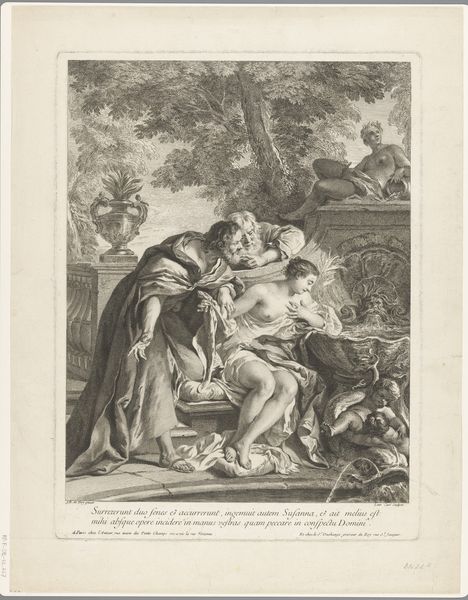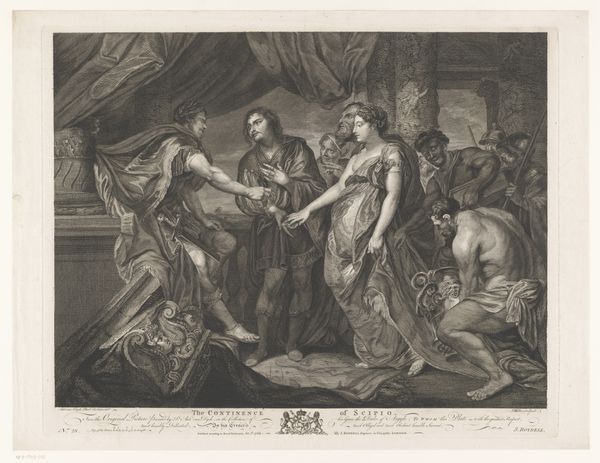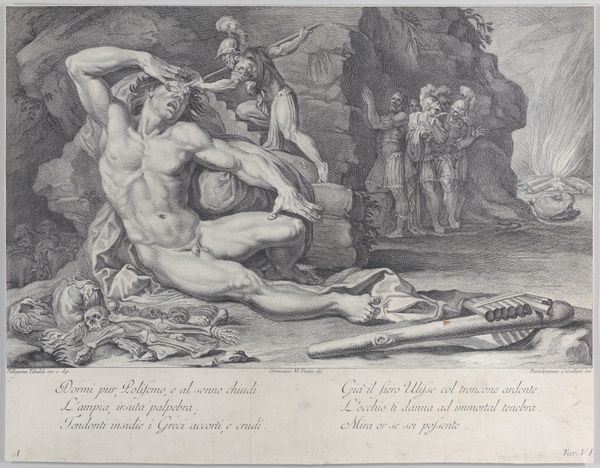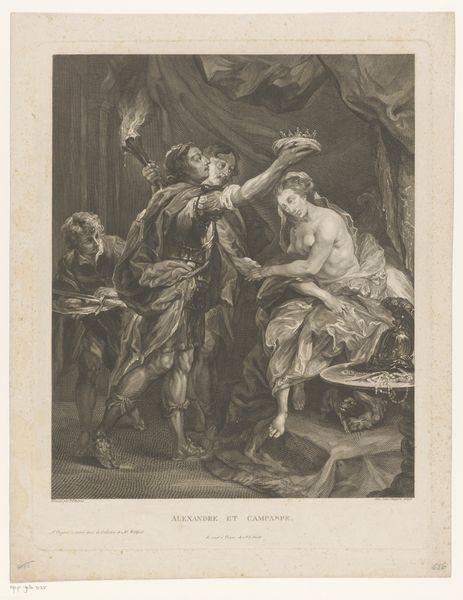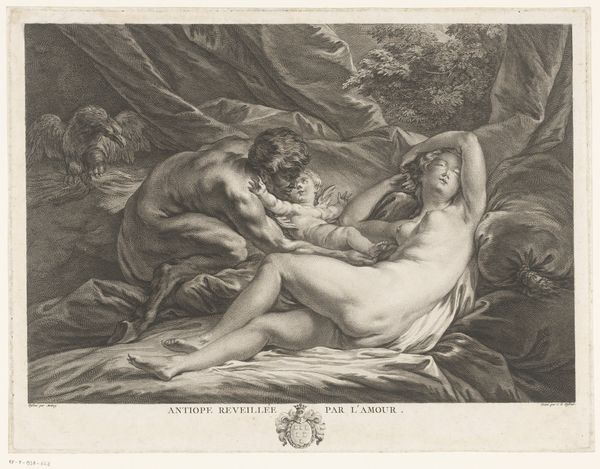
engraving
#
allegory
#
baroque
#
old engraving style
#
figuration
#
old-timey
#
limited contrast and shading
#
19th century
#
history-painting
#
engraving
#
erotic-art
Dimensions: height 298 mm, width 308 mm
Copyright: Rijks Museum: Open Domain
Editor: This is "Jupiter en Danaë" by Jean-Baptiste de Poilly, created sometime between 1679 and 1728. It's an engraving, and my initial impression is how the depiction of wealth and divine intervention intersect. It feels opulent and slightly voyeuristic. What historical context can you provide about this piece? Curator: It's intriguing to consider how this engraving functions within the social and political landscape of its time. Remember, prints like this were crucial for disseminating images, ideas, and narratives to a broader public. Think about who would have been consuming these images and where. Aristocratic homes, print shops…these places held political currency. Editor: So, it was a form of visual media, accessible to those with some means? Curator: Precisely. Now consider the subject matter: Jupiter’s seduction of Danaë. What message might the patron – likely a member of the elite, considering the mention of the Duc d'Orleans in the inscription - be trying to convey through commissioning or owning such an image? Think about power, sexuality, and representation. Editor: Perhaps it's a display of power? Jupiter, a god, taking what he wants. Is there a statement on societal norms? Curator: Potentially. Baroque art often served to reinforce the status quo, but also consider the *location* of the work cited within the inscription on the print. What could this cabinet have looked like, what other artworks might have been held there, and, thus, what can we ascertain regarding the possible meaning produced from viewing it among the patron’s other collections? And, do we see any element of eroticism here, too? Editor: That makes a lot of sense. Considering this print as a tool for the elite to project their power and indulge in a bit of classical eroticism, all while reinforcing social structures, changes my view of the piece entirely. Curator: Indeed. It transforms a simple image into a complex reflection of the socio-political dynamics of its era. There's always more to see when you examine art through its cultural lens.
Comments
No comments
Be the first to comment and join the conversation on the ultimate creative platform.
